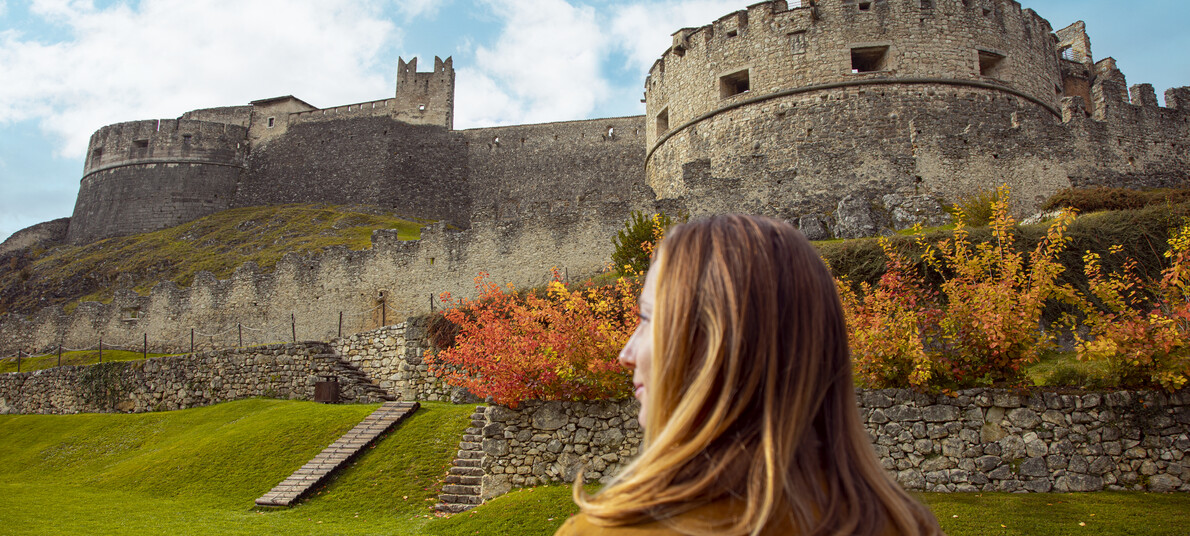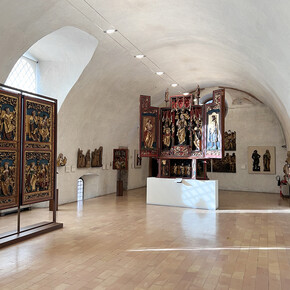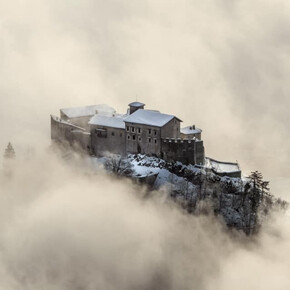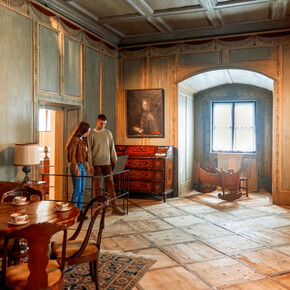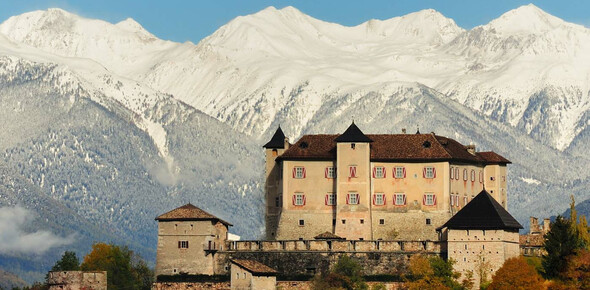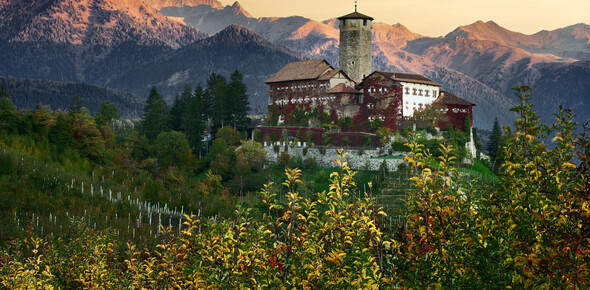Who were the prince-bishops?
A trail of museums and castles, where art and history interleave
For nearly 800 years (from the early 11th century until 1803), the prince-bishops were the lords of the prince-bishopric of Trento. This ecclesiastical state spanned much of today’s provinces of Trento and Bolzano. As you can imagine, Trentino’s history was profoundly influenced by these great men, two in particular: Bernando Clesio and Cristoforo Madruzzo.
Follow their footsteps on our History and Art Cultural Trail, through castles and works of art, fine houses and majestic churches – like those that hosted the famous Council of Trent (1545–63), a landmark event in the history of the Catholic Church.
Opening information
Castello del Buonconsiglio
- Open every day, except Mondays except holidays and December 25th
Museo Diocesano
- Open every day, except Tuesdays and December 25th, and January the 1st
Castel Beseno, Castel Stenico, Castel Thun
- From November 7th to December 15th: open on Saturdays and Sundays
- From December 16th to January 7th: open every day, except Mondays
Castel Caldes
- Closed from November to April
Palazzo della Magnifica Comunità di Fiemme
- Open every day, except Tuesdays and December 24th, 25th, 26th, 31st and January the 1st
We set out from Trento, the Council city (Stages A and B)
Our history and art trail begins in Trento, with the frescoed vaults of Buonconsiglio Castle. For centuries, its walls were home to the prince-bishops and a treasure chest of amazing art – from the sublime paintings and altarpieces now kept in the museum gallery to the elegant Renaissance frescoes by Romanino and Dosso Dossi.
PS don’t forget to book a tour of the Eagle Tower to admire the Cycle of the Months. These 14th- and 15th-century frescoes are an absolute masterpiece of International Gothic.
Next, we venture into Trento’s historic city centre and the sumptuous Renaissance frescoes adorning the façades of its aristocratic mansions. Your destination is Piazza del Duomo, the heartbeat of the city, for the majestic San Vigilio’s cathedral and the Tridentine Diocesan Museum. This is the place to really dive into the world of the prince-bishops.
Valley deep, mountain high, castle to castle (Stages C and D)
We leave Trento behind to visit four castles that figure prominently in the region’s history. A 25-minute drive away, the mighty Renaissance fortress of Castel Beseno was the epicentre of the historic battle of Calliano in 1487. It was a pivotal moment in the war between the army of Venice and the Trentino and Tyrolean warriors. With a museum, temporary exhibitions and lots for the kids to do, it’s a great place for a leisurely visit.
An hour further on, Castel Stenico stands at the foot of the Brenta Dolomites. Owned by the prince-bishops of Trento from the 12th century, it was the stronghold of the captain who ruled the surrounding lands. It now offers archaeological displays and a collection of fine frescoes, inlaid furniture and historic weaponry.
From the orchards of the Val di Non to the peaks of the Val di Sole (Stages E and F)
The next castle is a little gem, renowned for its elegant looks and impeccably preserved interiors. Surrounded by the apple trees of the Val di Non, Castel Thun was for centuries the seat of the Thun family, one of the oldest and most powerful in the Trentino nobility. Its collection of weapons, porcelain, carriages and original 16th-century furnishings includes the fabulous Bishop Room, lavishly appointed in a riot of stone pine.
After a lovely stroll in the garden, our route bears north to the Val di Sole and the imposing walls of Castel Caldes. Legend has it that this gothic-looking castle was the prison of Lady Olinda, locked up for falling in love with the court minstrel – a sad yet romantic backdrop to what is now a venue for major exhibitions, concerts and cultural events.
We finish in a historic mansion in the Val di Fiemme (Stage G)
The final leg in our artistic and historical journey leads to Cavalese, deep in the Val di Fiemme, and the Palazzo della Magnifica Comunità. Built in the Middle Ages for the prince-bishops of Trento as a summer residence and the seat for their Vicars-general, in 1850 it became the base of the Magnificent Community of Fiemme. This was an institution founded in 1111 for the welfare of the local people and to safeguard their cultural and environmental heritage. It now houses a museum, a fascinating picture gallery and various special exhibitions.
Our Cultural Trail ends here, but there is plenty more history and art for you to explore. The Trentino Castles Trail has a variety of nearly 30 historic buildings to enjoy; here is a selection for you to discover. Ready to go again?






